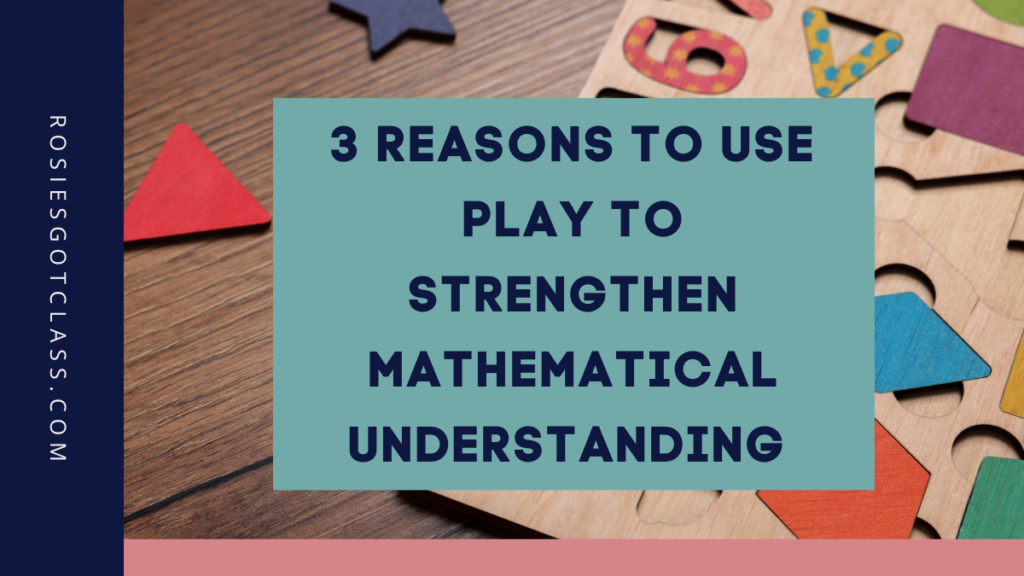
3 Reasons to use play to strengthen Mathematical understanding
Have you ever considered using play in your classroom to strengthen your students’ mathematical understanding? Many students struggle to grasp abstract concepts, and play can make the process of learning math enjoyable and highly effective. Play-based learning is a powerful tool in education to help students develop a deeper understanding of mathematical concepts. It is a win for you and for your students.
Did you know using a classroom transformation in your classroom is one method of play-based learning? With all of the games in a classroom transformation, you and your students will benefit with this fun activity during math. If you have never tried one, or if you want a simple one that is easy to prep, you will want this FREE sample of a Zoo Classroom Transformation. It helps your students practice addition facts within 20. It is quick for you to prepare to be ready for a fun math activity in your classroom. Get ready for your students to be highly engaged while they are practicing addition facts. Put your name and email in the boxes, and I will send it to you!
Play is synonymous with fun! When you play in math, your students are more likely to be engaged. Play-based learning creates a positive learning environment that helps students to actively participate and explore the math concepts they are learning. Children are engaged and motivated, it provides hands-on learning, and develops critical thinking and problem solving.

Reason #1: Engagement and Motivation to Develop Mathematical Understanding
By simply using math games, puzzles, or interactive activities, they often forget that they are learning math concepts. This learning process is what makes play-based education so effective. Whether it’s using building blocks to understand geometric shapes, playing card games to reinforce number sense, or making arrays with counters, students are immersed in activities that stimulate their thinking while having a great time.
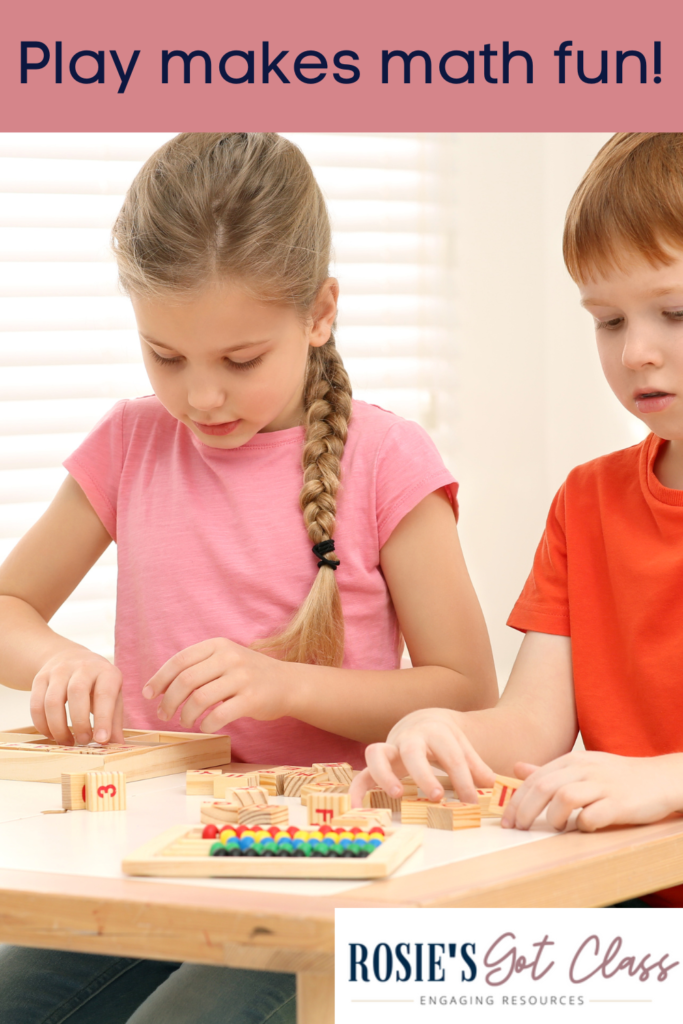
Play builds a sense of achievement and boosts students’ self-esteem when they successfully solve a math problem or win a game. This sense of accomplishment motivates students to tackle more challenging math problems with confidence. By creating an enjoyable and engaging mathematical experience, play-based learning can help students develop a positive attitude towards math and cultivate a lifelong love for the subject.
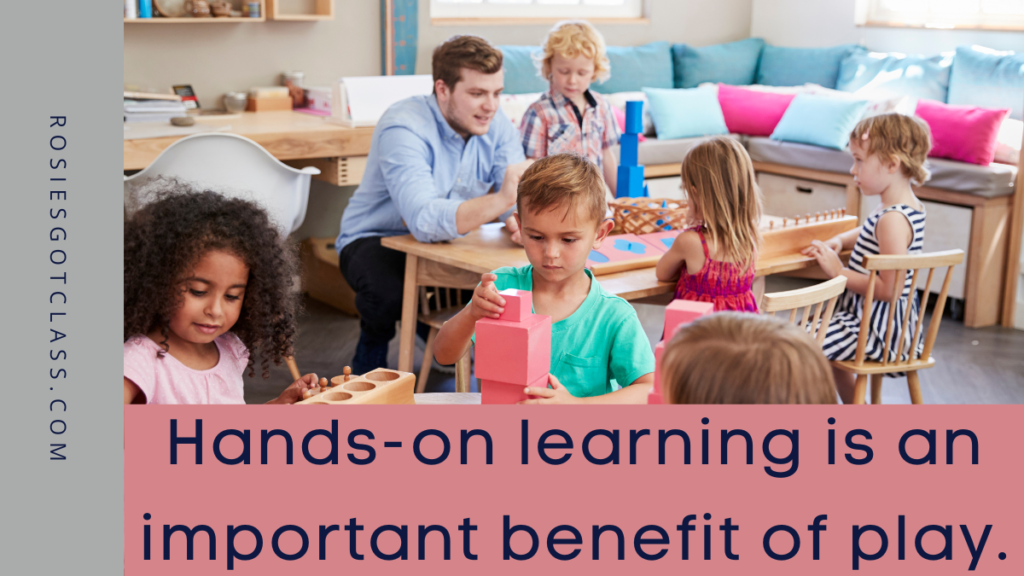
Reason #2: Hands-on Learning to Develop Mathematical Understanding
Play-based learning is focused on hands-on experiences. Children are actively participating in the learning process. They want to participate when manipulatives are involved. Using concrete objects helps to build deeper knowledge as they visualize and manipulate mathematical ideas. Here are some suggestions:
When focusing on doubles addition, I had my students use counters to show a number. Then I gave them a mirror to double the number. This is not a new idea or suggestion, but my students were much more engaged with this hands-on activity. In my opinion, higher engagement leads to deeper understanding.
It is so much fun to build an array! My students know how much I love arrays. The process of building an array helps students to solidify and deepen their knowledge of adding equal rows together. If I make an array of 4 rows with three in each row, then I can make the addition sentence of 3+3+3+3=12. This is also very helpful to prepare students for multiplication.
By using ten frames with counters, students are able to see the relationships between numbers. If I am adding 8+4, the student can put 8 counters in one ten frame and four counters in another frame. It is helpful for students to manipulate the counters and move 2 from the frame with 4 in it to add to the frame with 8 in it. This makes a 10 and is easier to add 10 + 2 which also helps to develop and strengthen number sense. Students can see how numbers work together to make easier problems.
By encouraging students to touch and feel objects, the math concepts you are trying to teach become more concrete. Whether you use measuring cups to teach fractions, use dice to understand probability, or create patterns with colored tiles, students are actively participating in the learning process. By physically engaging and manipulating the objects, students develop a stronger math foundation and also remember and apply their knowledge more effectively.
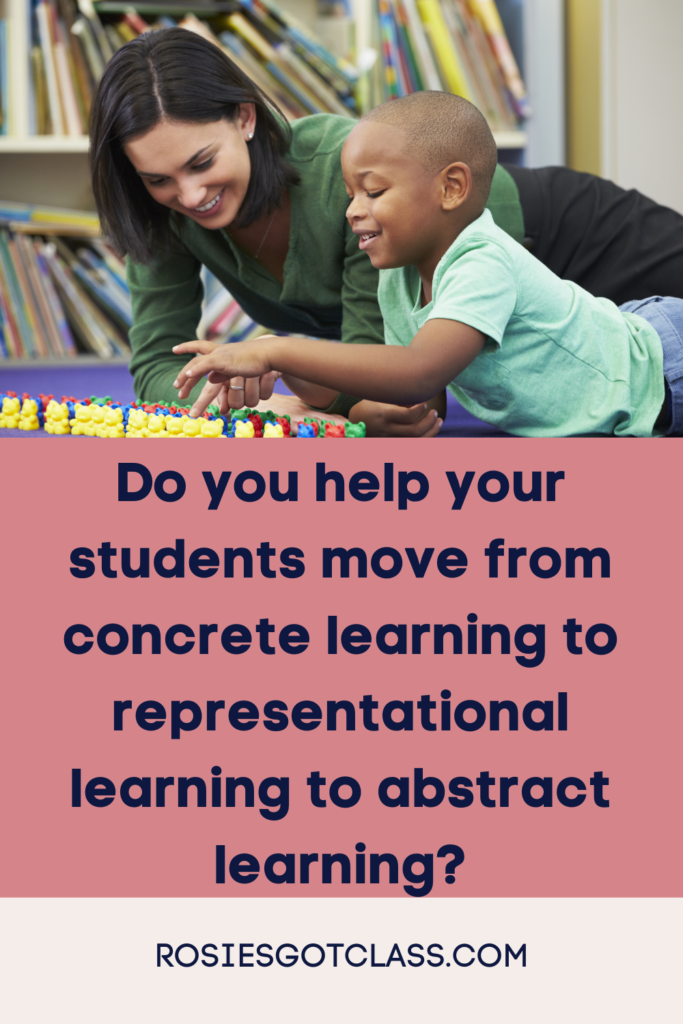
When you use play in your classroom, it helps you use the Concrete Representational Abstract (CRA) model for teaching math. I love beginning my math lessons with manipulatives because students can use them to begin understanding the concept I am teaching. After they have had time to use the manipulatives, it is simple to move them to the representational stage of learning. I simply say something like, “How can we draw what we just built with our manipulatives?” We often talk about how it isn’t really practical to carry around place value blocks or unifix cubes, etc. They like the idea that they can usually use a piece of paper and pencil to draw what they want to solve because they don’t have manipulatives handy. If they have had experience with the manipulatives, then they can easily move to the representational stage.
After they have had experience with both the concrete and representational stages of the concept, they can then move to the abstract part. This is when we ask them what 5+6 equals, and they can answer 11. It is much easier to get them to this stage when they have had time and experiences in the concrete and representational stages. When we skip straight to the abstract stage and ask what 6-4 is, we haven’t helped our students develop the background knowledge to answer this question. Using manipulatives to play, builds deep and lasting understanding and knowledge.
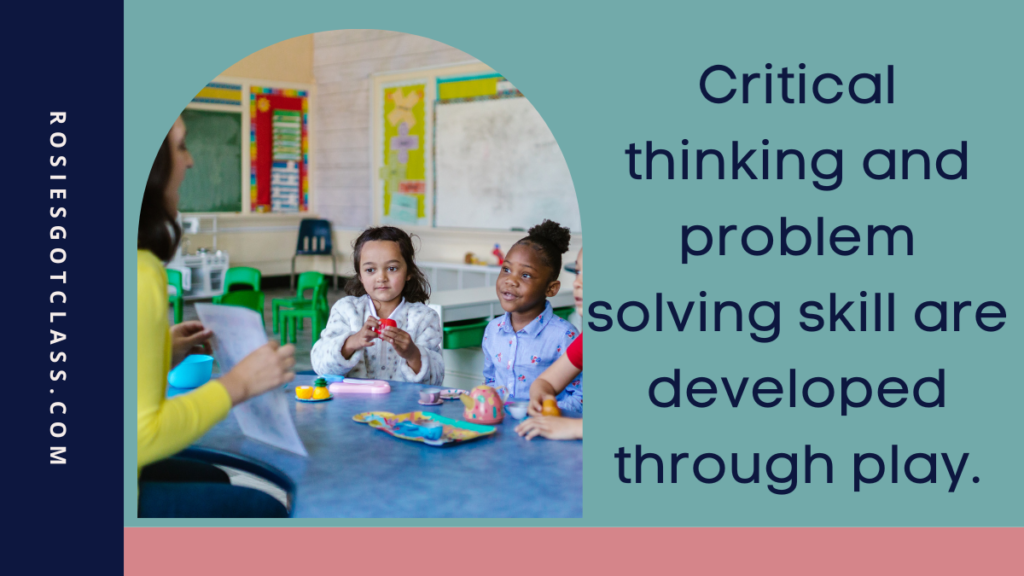
Play can help your students learn critical thinking and problem solving skills as they develop their mathematical understanding.
Reason #3: Critical Thinking and Problem-Solving Help Develop Mathematical Understanding
Math is not just memorizing facts. It helps to develop critical thinking and problem-solving skills. Play-based learning encourages students to think creatively and independently as it helps develop a deep and lasting understanding of concepts. When students are working on a difficult math problem, it helps them develop a growth mindset. They learn that practice makes progress instead of practice makes perfect. When they keep working on a challenging activity, they can learn to view mistakes as opportunities for learning. This also helps students build resilience and perseverance. They learn that making mistakes is one of the ways we learn.
Try using play with math manipulatives in your classroom today or this week. You will find that it helps build your students’ understanding of mathematical concepts. Math is enjoyable with hands-on learning experiences. It helps students grasp mathematical concepts more effectively and also instills a lifelong love for math. As teachers and parents, let’s use play to help us strengthen mathematical understanding. It is a plus for everyone involved!
Here are some other articles that you might find helpful about mathematical understanding and hands-on learning.
How Can my Student can Benefit from Hands On Learning? – Maths Australia


